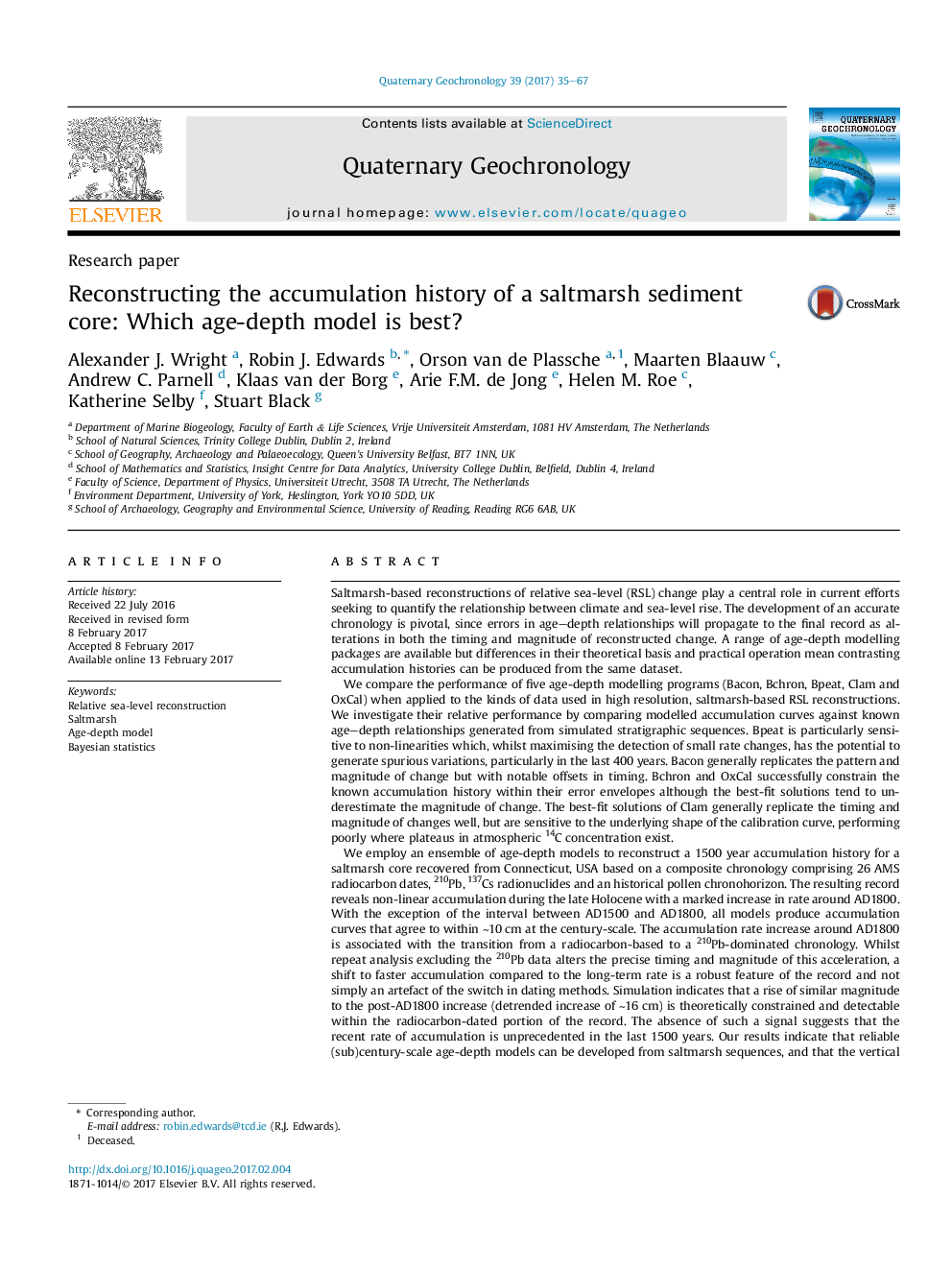| Article ID | Journal | Published Year | Pages | File Type |
|---|---|---|---|---|
| 5784991 | Quaternary Geochronology | 2017 | 33 Pages |
Abstract
We employ an ensemble of age-depth models to reconstruct a 1500 year accumulation history for a saltmarsh core recovered from Connecticut, USA based on a composite chronology comprising 26 AMS radiocarbon dates, 210Pb, 137Cs radionuclides and an historical pollen chronohorizon. The resulting record reveals non-linear accumulation during the late Holocene with a marked increase in rate around AD1800. With the exception of the interval between AD1500 and AD1800, all models produce accumulation curves that agree to within â¼10 cm at the century-scale. The accumulation rate increase around AD1800 is associated with the transition from a radiocarbon-based to a 210Pb-dominated chronology. Whilst repeat analysis excluding the 210Pb data alters the precise timing and magnitude of this acceleration, a shift to faster accumulation compared to the long-term rate is a robust feature of the record and not simply an artefact of the switch in dating methods. Simulation indicates that a rise of similar magnitude to the post-AD1800 increase (detrended increase of â¼16 cm) is theoretically constrained and detectable within the radiocarbon-dated portion of the record. The absence of such a signal suggests that the recent rate of accumulation is unprecedented in the last 1500 years. Our results indicate that reliable (sub)century-scale age-depth models can be developed from saltmarsh sequences, and that the vertical uncertainties associated with them translate to RSL reconstruction errors that are typically smaller than those associated with the most precise microfossil-based estimates of palaeomarsh-surface elevation.
Related Topics
Physical Sciences and Engineering
Earth and Planetary Sciences
Geochemistry and Petrology
Authors
Alexander J. Wright, Robin J. Edwards, Orson van de Plassche, Maarten Blaauw, Andrew C. Parnell, Klaas van der Borg, Arie F.M. de Jong, Helen M. Roe, Katherine Selby, Stuart Black,
